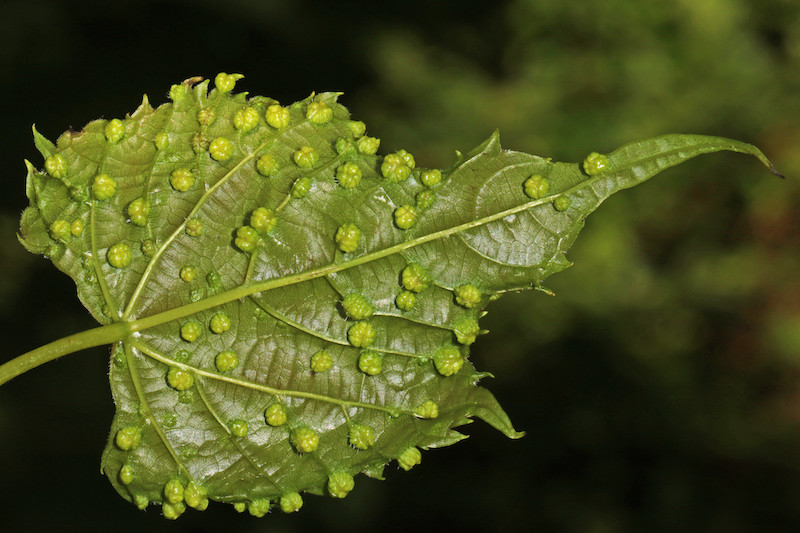A new approach to groundwater sampling: Using plants and insects to monitor environmental toxins
A team of biological and environmental researchers are exploring a novel method to improve the groundwater sampling of environmental toxins.

Figuring out what toxins pollute our soil and groundwater can be costly, labor intensive, and intrusive to the environment. Installing monitoring wells at toxic waste sites such as the green “ooze” zone in Madison Heights and the dioxane plume in Ann Arbor costs county health departments millions. A cheaper and eco-friendly alternative exists in nature.
When plants absorb water and nutrients from the soil, they can also absorb contaminants. The phenomenon inspired a groundwater sampling method called phytoscreening, in which plants are used to detect contaminants belowground. But phytoscreening has its limits.
“For some of our more emerging contaminants, such as volatile organic compounds (VOC), phytoscreening is falling short, because VOCs do not generally concentrate enough in some plant tissues, such as stems and leaves, to be detected in laboratory protocols,” says Sarah Black, a NSF-funded trainee in the Transformative Research in Urban Sustainability Training (T-RUST) program and Ph.D. student.

In 2021, Black joined the lab of Glen Hood, Ph.D., in the Department of Biological Sciences at the Wayne State University College of Liberal Arts and Sciences and became part of a research project more than three years in the making.
There, researchers are looking at an alternative plant tissue they hypothesize will concentrate VOCs at more detectable levels. That plant tissue is called a gall. A swelling of the external tissues of a plant that results in tumor-like growths, galls can be caused by a number of parasites, including viruses, bacteria, and insects.
“Insect-induced galls can form when certain insects lay their eggs in certain plants,” Black says. “The venom coating the eggs signals to the plant to redirect more nutrients to the injection site, forming a gall around the eggs. The eggs will hatch and the immature insects will feed on the inside of the gall, which stores incredibly high concentrations of nutrients taken up by the roots.”
That got Hood and another researcher at Wayne State, Shirley Papuga, Ph.D., in the Department of Environmental Sciences and Geology, thinking that perhaps contaminants would also accumulate in higher concentrations in galls.
A better alternative to groundwater sampling
To test their theory on using galls as a novel method of groundwater sampling, Hood and Papuga secured funding through the Barber Interdisciplinary Research Program at Wayne State in 2020 and hired two undergraduates to help with the work. Recently graduated environmental science major, Connor Socrates, helped develop the design for the study.
In 2021, they published a paper in the journal Plant and Soil, showing that galls could indeed be used to detect heavy metal contaminants and dioxane.
“(1,4-dioxane) is a synthetic VOC, and it's highly carcinogenic (cancer inducing) even at low levels. Found in shampoos, detergents, and cosmetics, it's incredibly difficult to remove from water and can persist in the environment for a very long time,” Black says.
With additional funding from the Undergraduate Research Opportunities Program (UROP), the Hood and Papuga labs along with help from Socrates developed a design to sample riverbank grapevine galls from the 30 km² and growing dioxane plume in Ann Arbor.
“Native grapevine is incredibly common in southeast Michigan, particularly in urban areas, and it is galled by an aphid-like insect called grape phylloxera.”
In the summer of 2021, the researchers started collecting data and took plant samples containing grapevine galls, leaves and stems from 14 sites with varying levels of dioxane.
Nine galls and one leaf tested positive for dioxane. Not one stem contained detectable levels of the VOC.
“The largest takeaway from this study is that galls were the most reliable plant tissue to detect 1,4-dioxane,” Black says.
But there’s more testing to be done. Black says that there were no strong correlations between the dioxane levels found in galls and those in nearby monitoring wells, or the distance between the galls and the source of contamination.
The labs will continue the research by conducting seasonal monitoring across Ann Arbor and analyzing data they collected from the green ooze site last summer.
Black says the ultimate goal is “to predict how much dioxane is in the groundwater using the concentration of pollutants that is in the galls.”
On March 8, 2022, Black presented their novel groundwater sampling method using insect galls at the Graduate Research Symposium. Her presentation titled: “Developing novel phytoscreening methods: Detecting carcinogenic environmental chemical contaminants" earned her second place in the platform presentation category.
By Kristy Case